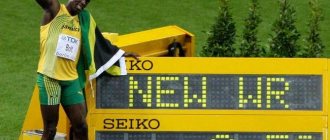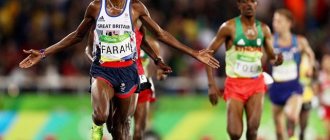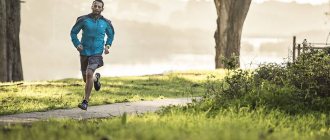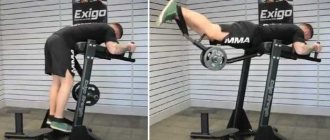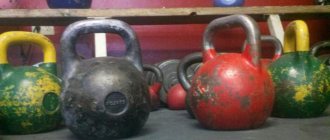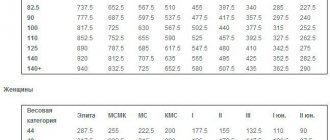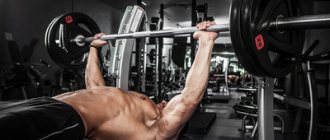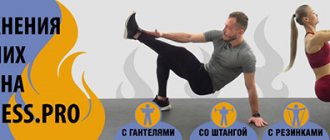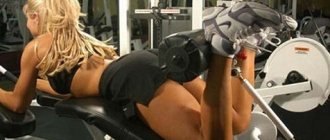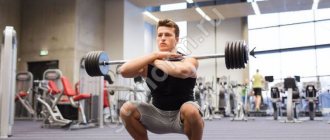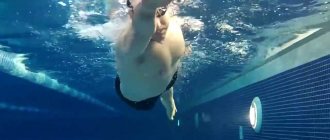History of the development of long jump
This sport first appeared in Ancient Greece. He was part of the main team of Pentathlon. Historians have not been able to determine the exact date of the appearance of running long jumps, but it is known that ancient athletes performed all exercises with a load in their hands. Most often, the additional weight was small dumbbells. Landings were made on loose soil or sand. Official competitions in this sport began to be held simultaneously with the advent of athletics. And already in 1860, jumping was included in the main program of the annual tournament at Oxford University. At the very first competition, a record of 5.95 m was registered. For many years, no one managed to beat this achievement.
However, the British Toswell and Lane are the first professional athletes whose long jump exceeded the threshold of 6 m. One managed to reach 6.40 m in 1868, and the other - 7.05 m (1874). For more than 60 years, Lane's record (7.05 m) has been an example to follow. However, in 1935, the legendary American jumper D. Owen was able to reach the mark of 8.13 m. This record lasted until the 1960s, when the International Athletics Association was created. From that time on, all results and achievements began to be officially registered. As for the women's category, the first record holder was the Japanese Hitomi in 1928, who jumped 5.98 m. The German Schultz surpassed the six-meter mark in 1939 (6.12 m).
Long jump: methods
Today there are 3 types of exercise techniques. These are such running long jump methods as “bend over”, “bent legs” and “scissors”. Each of them requires special skills and flying techniques. The easiest to learn and perform is the long jump with your legs bent. Its main nuance is a reduction in muscle tension in the thighs and abdomen. To do this, the athlete must bend and pull the pushing leg towards the swing leg. The body should be slightly tilted back. In this case, the arms are brought forward first and then up. As the flight path decreases, grouping begins. Your knees should be high and your shins should be loose. The body leans forward, and the arms move from above forward, then down and back. At the moment of landing, the legs should be straightened at the knees. The hardest part of this technique is maintaining balance. The “bending over” method requires long training, since it has a very difficult adjustment when pushing off. During flight, the athlete must lower the fly leg and then extend it as far back as possible. Hands make a circular motion clockwise from bottom to top. At this moment, the athlete finds himself bent in the body. Stretching your abdominal muscles makes it easier to lift your legs when landing. Having flown two-thirds of the way, the jumper must bring his shins as far forward as possible, straightening his knees. The disadvantage of this technique is the fact that athletes cannot realize all their speed capabilities. The above methods of running long jumps are very similar to each other. However, the “scissors” technique belongs to a separate and most complex category. Here, during the flight, the athlete must continue his natural movement (running through the air). According to the rules, the jumper must take at least 2.5 steps. During this action, the body should be slightly tilted back. The arms move in a circular motion asynchronously with the legs to maintain balance. The landing formation is standard.
Long jump: technique
The main objective of this sport is to overcome the maximum horizontal distance during flight. The technique of performing a long jump requires an acyclic structure of movement.
The effectiveness of training is determined by the athlete’s ability to develop his speed qualities. The key to success in the long jump is not only the ability to quickly run up and push off strongly, but also the ability to move correctly during flight. This is the only way to achieve high results in this type. Landing technique is also important. Professional track and field athletes most often use jumping methods such as “bend over” and “scissors”. The reason for using them is for greater efficiency in flight. The technique of performing a long jump using any of these methods requires a high level of skill, excellent speed and strength qualities. A well-developed coordination system is also important. In educational institutions, the easiest way to exercise is “bent legs”. Long jumps, the teaching method of which does not require much time and special skills, are very easy to perform even at a young age (9-10 years). During physical education classes, the teacher should draw the attention of beginning athletes to flight and tuck techniques. Otherwise, there is a high risk of injury. The long jump phase is divided into several stages. First, a run-up and repulsion are made, after which the flight begins. The final stage will be landing.
Types of jumps
In gymnastics there are two types of jumps: simple (or unsupported) and support. A few words about their distinctive features.
Unsupported
Unsupported jumps include those in which an obstacle (in this case a goat) is overcome without relying on the projectile with your hands. In this case, the bridge can be used, or there can be jumps without it. That is, the athlete takes a run and overcomes the obstacle in this way: he jumps over it without touching his hands.
Supporting
In this case, the athlete jumps over the apparatus, using it as a support for his arms. But there are variants of this type of jump, when the support in front of it is not the obstacle itself, which must be overcome, but is used as a support.
How to do a run-up correctly
The main indicator of this action is speed. The range of his flight, that is, the final result, directly depends on how quickly the athlete runs. Each athlete chooses the distance to the take-off point and the number of steps taken. These are individual characteristics that are based on the physical characteristics of the jumper. Professional athletes take approximately 22-24 steps when running at a distance of 50 m. For women, the distance from the starting point to the take-off line is 40 m. They conquer this distance in 20-22 steps. In amateur categories (for example, physical education), long jumps begin with a run of 20 m. In this case, the number of steps taken is not taken into account. The run-up is conventionally divided into 3 components: start, acceleration and preparation for take-off. The first stage can be from a standing position or from an approach. The start of the run sets the further pace and strength of the jump, so special attention must be paid to it. When starting from a standing position, the athlete begins moving from a specific mark, placing one leg in front of him and the other back on his toe. The important point here is the swing. When moving the body back and forth, the athlete deliberately shifts the center of gravity, establishing optimal balance. Starting from an approach requires hitting a control point with a certain foot, after which the run-up begins to be taken into account according to generally accepted rules.
When picking up speed, the amplitude of the legs and arms should be as wide as possible. It is important that the tilt of the body reaches 80 degrees. By the end of the acceleration, the body should take a vertical position. During the run, you must move strictly in a straight line, so that later you can push off comfortably and strongly from the track. A few steps before the start of the jump, the acceleration speed should be maximum. At this time, the shoulders should be tilted back and the pelvis should be pushed forward much further.
Warm-up before jumping
As in other gymnastic (and not only) disciplines, warm-up is necessary to warm up the muscles, ligaments and prepare joints for subsequent loads.
To begin with, you just need to concentrate, prepare your breathing, and walk around. Change your walking speed, periodically switching to running; make sure you are breathing correctly. Knead different parts of the foot: toes, outer side, heel area. Jumping and squats are good for warming up.
Important! It is better to start the run with a short step, and the step should be as fast as possible. A short step length is needed to select the legs: the pushing leg should be in front of the bridge at the desired point.
Stretch your muscles. Start by bending your body: to the sides, frontally - with this exercise you will stretch your lumbar region. Stretch your latissimus dorsi muscles. To do this, place your feet wider than your shoulders. Place the hand on the side you are going to pull behind your head, and the other on your belt. Stretch all the way towards your hand on your belt. Pull all the way, then relax a little - and again to the maximum. Repeat this 8-10 times, then train the other side.
Stretch your neck and spine. The hands are clasped in an elbow lock in front of you at chest level: the palm of one holds the elbow of the other, the legs are wider than the shoulders. Rotate your body from side to side, using your elbow lock as a flywheel. At first, smoothly and without jerking, gradually increasing the pace and sharpness.
Afterwards, you can proceed directly to the jumping warm-up. Jump in place, trying to pull your knees towards your chin. You need to jump at high intensity for 1 minute. The duration of the warm-up should be such that you feel blood flow to the muscles and slight shortness of breath, but no less than 20 minutes.
How to push off correctly
The running long jump technique involves not only acceleration and flight, but also the push itself, which is the key to a good result. How correctly and strongly the athlete pushes off the track, so high will be his final performance. It is worth noting that this part of the jump does not consist of a single ankle push. In fact, repulsion begins with placing the foot on a special boundary mark. At this moment, the foot rests on the outer arch, although some athletes shift the center of gravity directly from the heel to the toe. In any case, the sliding of the foot forward should be from 2 to 5 cm. Optimal take-off in long jumps is achieved by a special position of the foot. The pushing leg should be tilted 70 degrees and the knee slightly bent. This position is not recommended for beginner athletes, since the leg muscles are not yet sufficiently developed and the jumper may lose balance, in other words, not be able to cope with the ground reaction forces that act on his legs and body.
After the initial jerk from the surface, the hip and knee joints extend. At this time, the swing leg is carried forward and upward, fully straightening. This moment is marked by a sharp surge in the load on the jumper’s muscular and inertial system. This position in athletics is called vertical. During repulsion, it is necessary to perform swinging movements with your arms. This will increase the resulting jerk force. The task of repulsion is to achieve the maximum vertical speed of departure from the horizontal movement (take-off run). The faster the dash, the higher the jump height. The optimal launch angle will be 22 degrees. Beginners are allowed any deviation of the body, but only along the axis of movement.
Characteristics of vaults
Vault is one of the types of gymnastic all-around. These are short-term movements that are difficult to coordinate and require greater concentration of muscle effort. In order to quickly alternate jump phases, the athlete must be able to correctly distribute attention and instantly switch it. With the help of jumping, muscle strength, speed, agility and precision of movements are developed. Complex jumps followed by somersaults forward, backward, sideways and some others are associated with risk. When taught, they develop courage, determination, perseverance, and composure. Vaults place increased demands on a gymnast’s speed and strength training. They are included in every training session.
Classification of vaults‘ *
Vaults are classified according to structural characteristics. All structural groups are characterized by general and particular patterns. General patterns include the direction of rotation of the gymnast’s body forward after a push with the legs, and specific ones include changing or maintaining rotation after a push with the arms, as well as the method of pushing off with the arms.
Brief description of structural groups
1. Straight jumps. The gymnast jumps over the apparatus in the direction of the run in a slightly bent position. In the future, the jump can be performed with or without a swing, a push against the near or far part of the projectile, without turns or with turns of 90° or more. Hands are placed on the support at the same time. The push with the arms is a stopping one, after which the gymnast’s body acquires the opposite rotation—backward. This structural group includes jumps: legs apart, legs bent, bent over, in flight, etc.
2. Side jumps. Push with arms in lateral jumps is performed alternately. During a push with his hands, the gymnast can be in relation to the horse: a) sideways, at an angle or bending over, or b) in a handstand.
Jumps can be performed with a rotation of 90.180° or more. In lateral jumps, the first flight phase is very short.
3. Flip jumps. The gymnast passes over the apparatus in the take-off plane, turning over his head in a bent, bent or tucked position. This includes translation jumps
bending forward with your mouth, bending forward with a rollover, bending and unbending, a rollover followed by a forward somersault, etc.
In inversion jumps, the gymnast's body rotates in one direction - forward.
All jumps are performed by pushing against the near or far part of the projectile without turning and with turns of 180° or more.
Basics of technology
Each structural group of jumps is characterized by the characteristics of performing basic motor actions. Thus, straight jumps are characterized by a change in the direction of rotation after a push with the hands; for flip jumps, on the contrary, the original direction of rotation is maintained; for lateral jumps, an alternating push with the hands and the position of the gymnast’s body while supporting the apparatus. However, each of the jumps has a lot in common. For example, a jump onto a bridge is performed by a push of the strongest (push) leg, the push with the legs is accompanied by a swing of the arms. These similar actions, common to all vaults, form the basis of their technique.
To facilitate the analysis and study of the basics of the technique, vault jumps are conventionally divided into the following phases: run-up, jump onto the bridge, push with the legs, flight before the push with the arms, push with the arms, flight after the push with the arms and landing. Incorrect execution of at least one of the listed phases negatively affects the performance of the jump as a whole.
The final actions of the gymnast in one phase of the jump are always preparatory for the next phase. Thus, the correct completion of the swing and the full extension of the arms forward in flight after a push with the legs contribute to preparation for a rational push with the hands on the projectile; Some flexion of the body at the hip joints at the end of the flight after pushing with the hands facilitates preparation for a stable landing, etc. This must be taken into account when analyzing the reasons that caused errors in one or another phase of the jump.
When performing vaults, the motor actions of gymnasts must correspond to certain quantitative characteristics. Such characteristics are the speed of the run-up, the duration of the efforts and their direction when pushing with the feet on the bridge and hands on the horse’s body, the duration, height and range of the gymnast’s flight in the unsupported phases.
The technique for performing men's and women's jumps is fundamentally no different.
Take-off run. For highly qualified gymnasts, the highest running speed reaches 7.6-8.6 m/sec (for women 7-7.5 m/sec). The optimal take-off speed changes with the growth of sportsmanship, as well as depending on the characteristics of performing jumps of various structural groups. Thus (when performing the same jumps) the run-up speed of master gymnasts is higher than
for gymnasts of other categories. The take-off speed in straight jumps ranges from 7-7.6 m/sec, while in flip jumps followed by a somersault it is 8-8.6 m/sec.
The take-off should be uniform, without jerky acceleration. Significant fluctuations in the take-off speed negatively affect the quality of the kick performance. The repulsion conditions change from jump to jump. To avoid this, gymnasts need to:
start the run from the same starting position;
do not change (for this training period) the length of the run;
Gradually increase the take-off speed, since a sharp start causes stiffness in movements.
The length of the run-up depends on the apparatus through which the jump is performed, the type of jump, the individual characteristics of the practitioner, the degree of mastery of the technique, etc. For beginner gymnasts, the length of the run-up usually does not exceed 12-15 m, for senior gymnasts - 20 m. The technique of running steps is fundamentally nothing does not differ from the technique of sprinting in athletics.
Leap onto the bridge. The jump onto the bridge is performed at the moment of acquiring the highest horizontal speed. Reducing speed before jumping onto the bridge has a negative impact on the result of the jump and indicates an incorrect run-up. A jump equal to 1.5-2.8 m is performed by pushing the strongest (push) leg. At the moment of the pounce, the body bends forward at an angle of 5 to 26°, the legs overtake the body, the pushing leg, bent at the hip and knee joints, is pulled towards the fly leg, then the legs are connected and almost straight are carried forward. The attack on the bridge lasts 0.27-0.33 seconds. When pouncing, the arms from the extreme rear position begin to move down and forward, and at the moment the legs touch the bridge they are at the bottom. This is important for the subsequent swing of the arms.
The higher the take-off speed, the farther the bridge is placed from the projectile (at a distance of 50-200 cm). When installing a bridge, it is also necessary to take into account the type of jump (for example, an angle jump or a flip) and the location of the push with the hands (on the near or far part of the horse).
Push with legs. The jump onto the bridge is performed on the toes of tense, almost straight legs without moving to the entire foot. The legs on the bridge are parallel, approximately the width of the foot. The best jumping gymnasts place their feet in the place of the push, emphasizing. For this purpose, at the end of the jump onto the bridge, they actively extend their legs at the knee and hip joints and plantar flex the feet. Unskilled gymnasts passively wait for the moment to land. With an accentuated position, the legs push off in 0.09-0.12 seconds, and with an unaccented position - in 0.15-0.18 seconds.
The effectiveness of the leg push is also influenced by the timely swing of the arms. Most gymnasts from arm back position
make an active movement with your arms down and then forward and up. The movement of the arms is inhibited approximately at the level of the head. The kick with the legs and the swing of the arms end at the same time. The strongest gymnasts-jumpers in the process of pushing with their legs develop forces of up to 11-13 kg per 1 kg of the athlete’s body weight. At the moment the push ends, the legs are fully straightened at the knee joints.
Flight until pushed by hands. When performing certain jumps, the gymnast changes the angle of departure and makes various movements before the hands touch the support. During the flight phase, the trajectory cannot be changed. c. i.e., you can only change the position of the body and its individual links relative to the o. c. t. In straight jumps, the flight path is flat and low, the body is slightly arched at the waist, the shoulders move low above the horse to ensure a timely push with the hands. In inversion jumps, the gymnast performs a higher preliminary swing of the legs back—extends the body at the hip joints to a bent position. A swing performed to support with the hands contributes to: 1) increasing the speed of movement of the legs tangentially upward; 2) creating conditions for sharp flexion in the hip joints at the moment of pushing with the arms (the so-called jerking movement of the body), necessary to increase the pressure on the support area and slow down the speed of movement of the legs. All this affects the effectiveness of the subsequent push with the hands.
Hand push. Does the hand push depend on the structure of the jump? When performing straight jumps and flips, gymnasts place their hands on the apparatus simultaneously in front of the body, at an obtuse angle to it. This provides a stopping force. The hands are placed parallel to the place of the push; the push with the hands is performed towards the movement of the body, as if from oneself. The push should be combined with a jerking movement of the body (bending the body at the hip joints and moving the pelvis upward), allowing the gymnast to increase the pressure on the support area and push off more effectively. The greatest efforts are developed by the gymnast during a push with his arms when performing a flying jump (7-8 kg per 1 kg of the gymnast’s body weight), the smallest - in inversion jumps (3-3.5 kg/kg). In flip jumps followed by a somersault, the push force with the arms is 5.5-6 kg/kg. An energetic and short push with the arms (0.13-0.16 sec .) should end by the time the shoulders cross the vertical passing through the support area. O.C.T. location level body in this case is the largest, therefore, a large absolute jump height can be achieved.
In lateral jumps, hands are placed on the support alternately. The push is performed first with one hand, then with the other. In these jumps, the time of pushing with the arms is greatest and ranges from 0.3 to 0.4 seconds.
Flight after pushing with hands. The position of the gymnast's body in flight after the push with the arms determines the type of jump. The score for the jump as a whole largely depends on the quality of execution of this phase. Highly qualified gymnasts, when performing straight jumps after a push, move their arms not forward, but back and up;
when jumping inverted, at first they maintain the position of the arms adopted at the end of the push, and only in the second part of the flight do they slightly move them outward. Having fixed the position that determines the shape of the jump, the gymnast maintains this position (flight jumps, flips) or bends (bent jumps, legs apart, etc. ) - The longer the clear position is maintained, the higher the quality of the jump. The best jumping gymnasts have a lifting height, o.c.t. the body in this phase reaches 2.5-2.6 cm. The duration of the flight phase after pushing with the hands ranges from 0.7 to 0.9 seconds.
Landing. Having landed on the toes of tense legs, the gymnast immediately lowers himself onto his entire foot and slightly bends his legs, increasing the tension in the muscles of the back and shoulder girdle. In this position, your heels should be together, your toes and knees apart, your arms up and out, your torso slightly tilted forward (do not tilt your head forward).
Previous37Next
Correct flying technique
After the push-off phase from the track, the most difficult part begins for the athlete - movement in the air. Flight is the most difficult element to perform. The running long jump technique requires not only maintaining balance and correct body position, but also creating optimal conditions for landing. The range and balance of the flight directly depend on how the athlete pushes off. The best representatives of this sport reach speeds of up to 10 m/s. In this case, the maximum lifting height is about 60 cm. During takeoff, the push leg should remain behind the body for some time, and the fly leg should be bent to a horizontal level. This running long jump technique can be used in any method, even in scissors. The body should be tilted forward slightly. The arms should be bent and directed along the axis of movement in different directions. The flight phase depends on the method of performing the jump. As for the final stage, the athlete’s torso and limbs must take a special position - tucked. An instant before landing, both legs should be straightened and extended forward, parallel to the horizontal surface. Your arms should move in a circular motion to maintain balance, then move them back as far as possible.
Description
Vaults are included in the program of both women's and men's tournaments. In the modern program of the Olympic Games, vault competitions are held, in which a set of medals is played out; These competitions are also included in the team and absolute championship program.
When performing a vault, the athlete runs along the track, then pushes off using a special inclined spring bridge and makes a jump, during which he must make an additional push off from the apparatus (this can be a gymnastic goat or a special apparatus). During the jump, the athlete performs additional acrobatic elements in the air (somersaults, pirouettes, spins, etc.). The performance is assessed by the complexity of the elements performed, their cleanliness, and the absence of errors. Particular attention is paid to the quality of the landing; a fall during landing or even an uncertain landing will lead to a sharp decrease in the final score.
According to the rules of the FIS - Gymnastics Federation - the height of the apparatus is 135 cm from the floor surface. The approximate length of the runway is 25 meters, width is 1 meter. The height of the spring bridge is 20 cm.
In team and all-around competitions, gymnasts perform one vault. If a gymnast expects to qualify for the vault final, he must show two jumps from different structural groups in the qualifications. The final in a separate event, the vault, also requires the gymnast to perform two different vaults. The total score of the gymnast is half the sum of the first and second jumps.
Jumps can be divided into flying jumps (without turning over your head) and jumps with a flip. Any flip is a 180 degree rotation in the air. Accordingly, if a somersault is added to the flip, the result is a rotation in the air of 540 degrees around the longitudinal axis. All somersaults performed after flips will be one and a half somersaults.
That is, a flip - a somersault, if we consider it from the moment the hands touch the projectile until the moment the feet arrive on the mat, will be one and a half somersaults (1.5 somersaults). By analogy, a flip - a double somersault, can be considered as a 2.5 somersault, etc.
An important element for performing a vault is the springboard.
How to land correctly
Preparation for this phase of the jump begins the moment the flight path begins to descend. At this moment it is important to group correctly. To be effective, you should hold your legs in such a position that their longitudinal projection is at the most acute angle to the horizontal surface.
The running long jump technique also involves proper contact with the landing area. At the same time, it is important to take care of leaving the flight phase. To do this, it is necessary to relax one leg, towards which the maneuver will be carried out, and at the moment of contact with the surface, turn the body. Care is carried out through the back (back), bringing both the shoulder and arm forward at the same time. It is worth noting that prematurely bringing the torso into this position can lead to lowering of the legs and early contact with the surface.
How to increase your jump length
The following will help you perform a standing long jump and jump further:
- perfect technique worked out;
- daily warm-ups, stretching;
- the ability to breathe correctly.
To increase your jumping distance, follow these guidelines:
- the execution technique must be perfect;
- strengthen your back muscles with exercises;
- run more;
- start practicing other types of jumps;
- Stretch your muscles thoroughly every day;
- learn to breathe correctly and deeply;
- track your progress.
Set of exercises
Squats, jumping from a semi-sitting position, jumping onto a hill.
The methodology for teaching standing long jumps begins with preparing and strengthening joints, ligaments, and analyzing the technique of the exercise itself. Training sessions include a variety of exercise options.
Ver.1. With barbell:
- 10 squats;
- 10 jumps from a semi-sitting position;
- 10 jumps to high ground.
Ver.2. With weight that varies depending on your own:
- 3 jumps forward with 60% of your body weight;
- 3 jumps with a weight of 50% of personal;
- 3 jumps with 40% body weight.
Var.3. A variety of jumps, with each new approach increasing the range:
- 10 jumps over obstacles;
- 3 jumps up, pulling your knees to your chest.
By doing all the complexes at least 2-3 times a week, you can increase the distance of your standing jump.
Official Rules
Long jump results are determined along a straight axis perpendicular to the bar, starting from the take-off line and ending with the athlete’s trace (any part of the body). Exit from the pit is only allowed to the side or forward. The long jump rules invalidate the result if the athlete steps beyond the line parallel to the bar when taking off. Also, the final results are not counted if the athlete landed outside the pit or left a mark on the plasticine before the flight phase. The first touch of sand will be counted as an intermediate result.
In addition, the long jump rules determine the number of attempts that an athlete can make before his final (best) score is recorded. The number of so-called chances is limited to 6 times. The exception is competitions in which more than 8 athletes participate. In this case, conducts a qualifying round of 3 attempts for each jumper. 8 athletes with the best performance advance to the final stage.
Generally accepted standards
In professional and amateur sports, standards differ markedly. Long jump standards for boys from 9 to 10 years old range from 1.90 to 2.90 m. For girls at this age, the indicators should be in the range from 1.90 to 2.60 m. By the age of 15 for boys the norm is 3.30-3.90 m, and for girls - 2.80-3.30 m. In the semi-professional category (from 18 years old) the figures should be much higher. The standard for running long jump for men is from 3.80 to 4.40 m. For women, the final result must be in the range from 3.10 to 3.60 m. To receive the title of “candidate master of sports”, jumpers must exceed amateur figures almost doubled. For the master of sports, the norm is 7.20 m. As for the “master of sports”, the allowed limit here starts from 7.60 m. The status of master of sports is achieved as a result of grueling long training. The norm for an “international master of sports” is 8.00 m.
World records
The USA clearly leads in the number of athletes with the best performance in this sport. Today the world record (running long jump) belongs to the American Mike Powell. At the open championship in Tokyo in the summer of 1991, the athlete managed to reach the mark of 8.95 m.
A similar record for women belongs to the Soviet jumper Galina Chistyakova. In June 1988, he reached 7.52 m. The absolute world record (running long jump) for the number of phenomenal results belongs to the American Ralph Boston. From 1960 to 1965, he managed to exceed other people's and his own maximum performance 6 times. The only Soviet athlete who could challenge the American was Igor Ter-Ovanesyan. He became a record holder twice in 1962 (in Yerevan) and in 1965 (in Mexico City).
Links
| Vault at Wikimedia Commons |
Wiktionary has an entry for "vault"
- Article “Artistic gymnastics” in the Around the World encyclopedia
- Video tutorial on Men's Vault
- Video tutorial on Women's Vault
- Description of vaults and methods of teaching them
| Equipment in artistic gymnastics | |
| Women | Floor exercise • Vault • Log • Uneven bars |
| Men | Floor exercise • Vault • Crossbar • Rings • Horse • Parallel bars |

